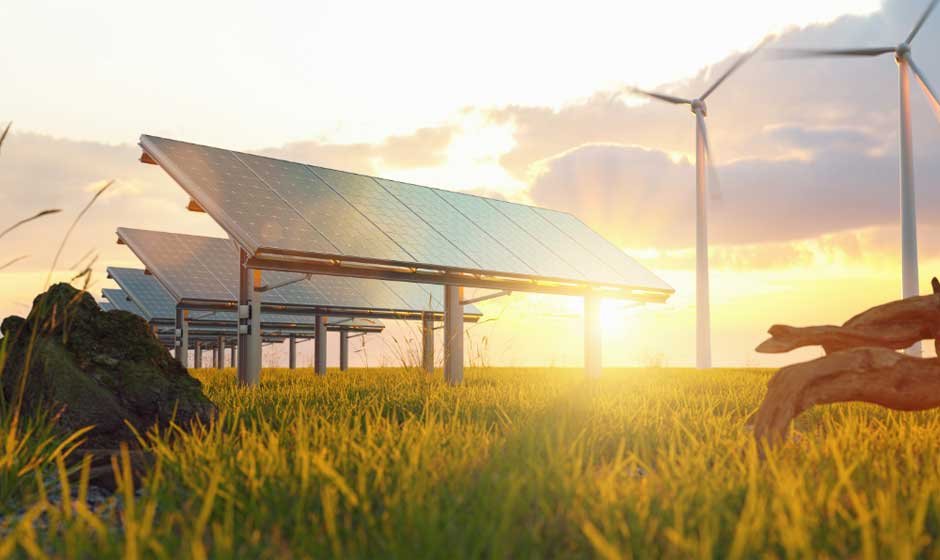Introduction to Renewable Energy
Renewable energy is derived from natural processes that are replenished constantly. Think of solar, wind, and hydroelectric power, which harness the sun, air, and water energy. Renewable energy represents a beacon of hope in addressing climate change and reducing greenhouse gas emissions. Countries worldwide recognize the need to pivot towards sustainable energy sources, reducing their dependency on fossil fuels that deplete rapidly and harm our environment. For consumers, understanding the landscape to choose the best Texas electric provider reflects a growing demand for green energy solutions with competitive pricing and reliability.
This global transition addresses environmental concerns and strives for energy independence. Regions previously prone to energy importation can now generate their power, promoting security and stability. This change is especially significant in areas like Texas, where the energy market is increasingly adapting to incorporate renewable energy, thus offering a wide range of choices for those looking to reduce their carbon footprint.
Innovations in Solar Energy Technologies
Solar energy has always been a vital component of the renewable energy sector. Its promise lies in its abundant availability and decreasing costs, making it a popular choice globally. In recent years, the development of perovskite solar cells has caused excitement within the industry. These cells, lighter and more flexible than traditional silicon cells, potentially offer efficiency rates above 30%, a significant increase from current averages. Such advancements promise to decrease installation costs while maximizing energy output. The continuous improvement of solar technologies has the potential to accelerate the clean energy transition, pushing solar power to become a mainstay in global energy production systems.
Wind Energy Developments
Thanks to its ability to harness the wind’s kinetic energy using turbines, wind energy is vital in the renewable energy spectrum. As technology improves, turbines have become more efficient, capturing wind energy even at lower speeds. This development broadens the potential sites for wind farms, including offshore locations with more substantial and consistent wind patterns. Offshore farms present an opportunity to produce significant energy due to the lack of physical barriers and high wind velocities. Governments worldwide recognize these benefits and offer incentives to promote wind energy projects, intending to increase their renewable energy footprints.
Moreover, the scale of current wind projects is growing, with some turbines reaching heights that allow them to access more stable wind currents. Such advancements are crucial in making wind energy cost-effective and reliable, improving its competitiveness with fossil fuels.
The Role of Hydropower
Hydropower leverages energy to move water, making it one of the oldest renewable sources. Throughout history, it has been used extensively in large-scale projects like dams. However, these projects often lead to significant ecological and community disruptions. The focus is shifting towards small-scale hydropower solutions, which minimize environmental impacts and provide energy to local communities without massive infrastructure.
Innovations in technology allow these smaller systems to operate in diverse settings, transforming flowing streams and small rivers into reliable energy sources. These developments mark an essential progression towards eco-friendly energy systems that meet energy demands without disturbing natural habitats. Although hydropower still faces criticism for its ecological impact, newer methods aim to mitigate these issues while sustaining energy generation.
Bioenergy as a Resource
Bioenergy, derived from organic matter, represents an adaptable and renewable option in power generation. It includes biofuels made from plant materials and biogas produced from waste. Recent advancements focus on improving conversion technologies to increase efficiency and reduce costs, making bioenergy a viable alternative to fossil fuels. However, discussions around bioenergy often highlight its environmental trade-offs, such as land use changes and competition with food resources.
Despite these debates, bioenergy remains an integral part of the renewable landscape. Its ability to provide base-load power, as opposed to the intermittent nature of solar and wind, makes it an attractive component of energy strategies. As the world continues seeking sustainable energy solutions, bioenergy could play a critical role, complemented by technological innovations that enhance its efficiency and sustainability.
Challenges Facing Renewable Energy Adoption
The road to full-scale renewable energy adoption is fraught with challenges. One significant barrier is the initial cost of developing the required infrastructure, such as solar farms, wind turbines, and smart grids. These systems demand substantial upfront investment, posing a challenge to widespread implementation, especially in developing countries. Additionally, the shift requires upgrading existing grid systems to accommodate the unique needs of renewables and maintain a reliable power supply.
Energy storage represents another hurdle. Renewable sources like solar and wind are intermittent, generating power only when the sun shines or the wind blows. Reliable and efficient storage solutions are imperative to ensure a steady power supply. Meanwhile, regulatory and political challenges impede progress, as government policies sometimes fail to create conducive environments for renewable energy projects due to a lack of consensus or prioritization.
Future Trends and Predictive Insights
The future of renewable energy looks promising, with various trends paving the way for more profound changes. Notably, integrating artificial intelligence (AI) in energy systems is set to transform how energy production and distribution are optimized. AI can enhance grid management and storage solutions and predict energy demand, leading to more efficient and resilient systems.
Innovative materials and technologies continue to emerge, potentially revolutionizing energy capture and storage. These trends suggest a significant shift towards a more sustainable and reliable energy future.
Conclusion and Call to Action
As explored, renewable energy sources hold the key to a sustainable future. They promise reduced carbon emissions, energy independence, and economic benefits. Although challenges remain, technological innovations and policy adjustments continue to make renewables more accessible and efficient. Each contribution towards this clean energy transition, no matter how small, moves us closer to a sustainable world.
Individuals and communities are encouraged to support and engage with renewable initiatives and advocate for policies that facilitate their growth. Education and awareness are critical, as they empower people to make informed decisions that align with environmental sustainability. Together, these efforts will spur the renewable movement, helping secure a cleaner, brighter future for future generations.










